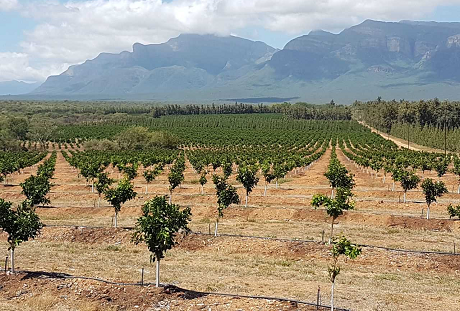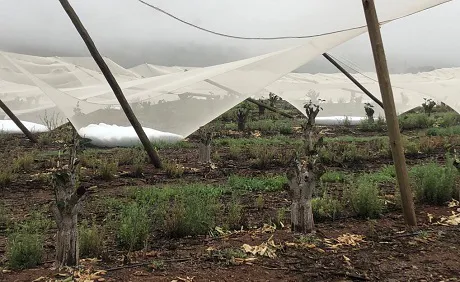Lemon volumes are picking up from the north of the country. Very early lemons have been harvested since the beginning of the year on Alicedale Estates, “opening batsman for South Africa’s lemon campaign”, quips producer Peter Nicholson in Tshipise, the very north of the country. The harvest is a nice, good average, he says.
Exports to Russia, the Middle East and the Far East have commenced at satisfactory price points, he notes, same as on the domestic market. “Global lemon prices are healthy at the moment and coming in as early as we do, when the Northern Hemisphere hands over to the Southern Hemisphere, it’s a good time to market lemons.”
The price peaks of previous years aren’t as pronounced anymore, as a result of lemon expansion and larger volumes.
Seedless lemons
Seedless lemons make up 15 to 20% of Alicedale Estate’s orchards and they’ve been exporting seedless lemons for a while, marketing them as conventional lemons to the Far East, but this season marketing of South African seedless lemons is moving up a gear, particularly as there is a nice opportunity for the product in Europe. Shipping will start in the coming weeks, after a slight delay in colour development.
“Colour is an important aspect to manage,” says Riaan Ellis, marketing manager of Unifrutti South Africa. “The Far East wants a bit more colour to the lemons, you can’t get away with too much green but similarly, lemons that are too yellow appear old to buyers.” He notes that the colour expected by the current export markets of Russia, the Middle East and the Far East are generally in the same band.
South African exporters are now waiting for European supermarkets to announce the change in supplier origin. Most exporters are waiting for Spanish Verna supplies to clear out before starting their European campaign. Lemons for the European wholesale market are typically sent a bit earlier, to take advantage should the tail-end of the Northern lemon season be abbreviated.
 Limpopo lemon orchard
Limpopo lemon orchard
Heatwave, hail and wind
The heatwave in October didn’t have a significant effect on their lemons, says Peter Nicholson. He points out that despite temperatures reaching highs of over 45°C, the extremes didn’t continue for long periods. “We don’t have too many fruit on the trees, so that the size distribution is good, peaking at 138 and 113, closer to what the market wants.”
Severe hailstorms, accompanied by very strong winds, hit Nelspruit in December and November (the Lowveld lemon harvest starts in about a month). “We had a hailstorm on 22 December, with a tornado that took down or tore 43ha of hail netting, and another smaller hailstorm on 5 January. Of 138ha of citrus, about half, mostly navels and Valencias, sustained 80% of hail damage. The result is that we’ll have more class 2 fruit, with about 200,000 cartons already committed for export that have been cancelled,” says Lionel Eva, general manager at Joubert & Seuns outside Nelspruit. “Well, that’s the way farming goes. You’ve just got to keep your head down and your chin up.” They’re repairing the hail netting, able to re-use almost two-thirds of the poles and cables, but for netting there’s a wait of a couple of months.
 Hail damage to citrus trees and netting (photo supplied by Lionel Eva)
Hail damage to citrus trees and netting (photo supplied by Lionel Eva)
Hoedspruit and Tshipise have escaped any serious hailstorms so far and fruit is generally free from wind marks.
In the Eastern Cape, lemon powerhouse of South Africa, wind has been of concern this year and could have an impact on packouts.










